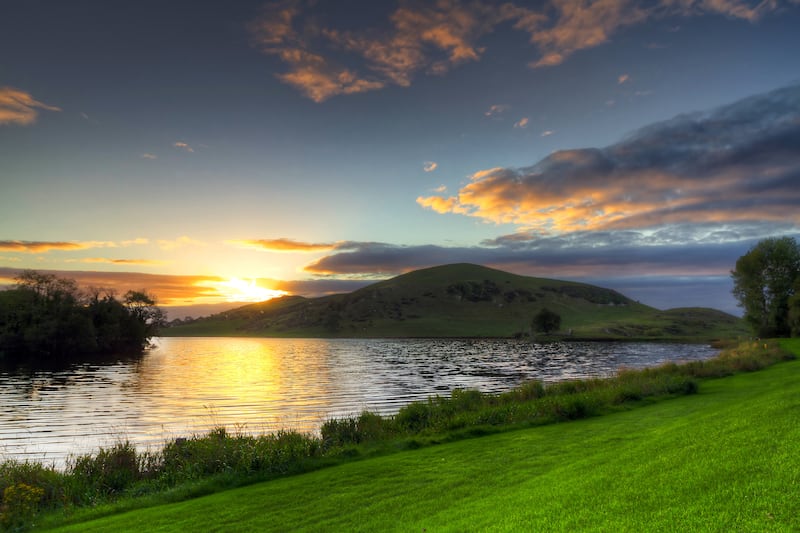A recent RTÉ Nationwide visit to Lough Gur in south Co Limerick prompted the question in my mind: where is Lough Gur and what is so special about it? I idly Googled it and up popped an invitation to the Lough Gur Experience, a two-hour guided sit-on kayak trip around the lough, costing €40. And so, the next day I set out from Dublin and arrived to a place of still skies, hushed limestone hills and calm silver waters. By 9.30pm the same evening, I was back on the road to Dublin, my head spinning with the beauty of the place and its wonderful stories of myth, magic and archaeology, wondering, why had I come so late in my life to Lough Gur?
Our ancestors were late too in coming to Lough Gur, in its long life of more than 12,000 years. The lough was a lonely and forlorn place for many thousands of summers and winters after its rocky depression filled with muddy Ice Age meltwaters and clear limestone springs, and it began to experience wind, sun, rain and snow for the first time. It was visited only by bears and wolves and deer, and the slowly colonising flora that found favour in and around its hills and shores. Then, 6,000 years ago, wandering bands of hunter-gatherers of the Mesolithic period arrived, gazed upon the lake and made it home, at least for a little while.
Neolithic pastoralists came afterwards, and they liked it enough to stay. The resources of the lough shores and hillsides were cut and gathered and bound to fabricate long-lasting dwellings and stockades. From then on, people coexisted intimately with the lough, some utilising its waters and surrounding hilltops for security and defence.
It was not always idyllic; no doubt conflict and tribal warfare, and exploitation and deep religious differences and times of hunger would have punctuated the lives of the people who lived around Lough Gur’s shores and hills. But we know nothing of these happenings. The evidence on the ground is of generations of Stone Age people who lived, loved and laboured there, and took the time to write their stony signatures into the Lough Gur landscape. The most amazing and evocative and mysterious of these is the Stone Circle of Grange near the lough’s western shore. Great stretches of time would have separated the peoples of these prehistoric ages. Memories would have shaded into myths.
Hyrox, the soaring fitness trend: ‘You meet so many different people, all shapes, all sizes’
The Last of Us review: Prepare to be shocked by this compelling new season
Finneas in Dublin review: Without his sister Billie Eilish, O’Connell shows his worth with a fun, high-quality gig
My grandfather died by suicide. I work in the same Irish university where he taught history

Brian Collopy, a guide with the Lough Gur Development Group, told these stories to our group of eight kayakers as we paddled or hung out on the lough’s glassy surface, listening to his every word. He picked up on the more “modern” myths of the place, those that he could access from his studies of surviving folklore. He entertained and enthralled us with stories of fairies and St Patrick and a multitude of mythical personages, mainly female as is the Celtic tradition, and of magical events, all inspired by the watery Celtic spirituality of the place. Every hill, he told us, every promontory, every woodland, every seemingly random heap of stones, has a story to tell.
He told us of green-lit caves, Tír na nÓg, the Vikings, the Normans, the Fianna, ancient roadways or ceremonial avenues, early Christian worship and of the mystery that permeates rock and stone and water. We floated around Brian on that shining lough surface, seen first by those stray hunter-gatherers and witness to everything since. And for us mainly novice kayakers, the water became a calming, almost ethereal medium through which our imaginations connected with the stories told to us.
We were certainly not the first to be enthralled and enraptured by the myth and mystery of Lough Gur. Since the 17th century, the lake and surrounding landscape has inspired antiquarians, folklorists, archaeologists, natural historians, geologists, poets and writers.
There’s also a visitor centre, with a two-hour tour available from one of 10 Lough Gur guides, managed by the Lough Gur Development Group, a place that mixes science and myth and education and fun, and will richly reward a visit with all the family. loughgur.com












